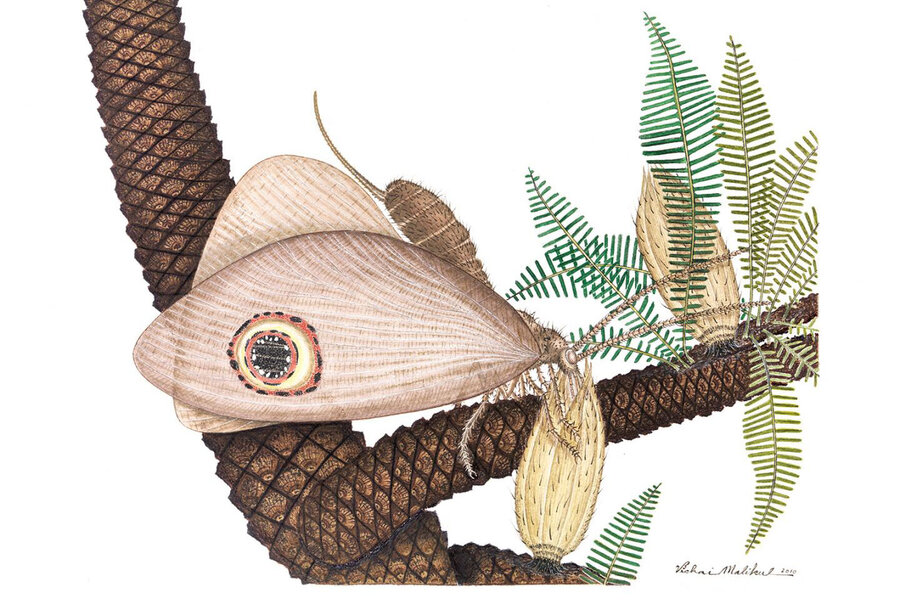The modern butterfly has a 40-million-year-old dopplegänger
Loading...
It looks like a butterfly, it even pollinated flowers like a butterfly, but what scientists found from ancient lake deposits in northeastern China was another winged creature – one that existed some 40 million years before the butterfly came along.
These butterfly-like insects are the long extinct lacewings of the genus kalligrammatid called Oregramma illecebrosa. Although they would evolve into an insect still distinct from the modern butterfly, an existing genus of their ancestry survives into modern day. They are known as fishflies, owlflies, and snakeflies.
With a circular, eye-like marking on its wings, the ancient lacewings is strikingly similar to the modern owl butterfly. More remarkable, however, was their feeding mechanism. Like their modern-day butterfly sisters, the lacewings fed on the nectar of plants with flower-like reproductive organs that produced pollen.
"Upon examining these new fossils,” co-author David Dilcher, a paleobotanist, explains in a statement, “we've unraveled a surprisingly wide array of physical and ecological similarities between the fossil species and modern butterflies, which shared a common ancestor 320 million years ago.”
This phenomenon, Dr. Dilcher said, is an example of convergent evolution, in which two distantly related species develop similar characteristics separately over time.
Led by Conrad Labandeira, a curator at the Smithsonian Institution's National Museum of Natural History, and Dong Ren of Capital Normal University in Beijing, the study entailed the analysis of fossils recently recovered in northeastern China and eastern Kazakhstan using imaging tools. How they discovered that the lacewings fed on seed plants, for instance, was through the meticulous examination of the tiny fossilized remains of food and pollen inside the mouthparts of the insects. It turns out they had long tongues to probe into plants and hairy legs that trapped pollen.
This system of pollination, however, is not quite the same as the modern process that involves angiosperms, or flowers with reproductive parts that are contained with a seed. The plants with exposed reproductive parts pollinated by the lacewings millions of years are called gymnosperms, but they gave way to the emergence of angiosperm.
The study was published Wednesday in the Proceedings of the Royal Society.








